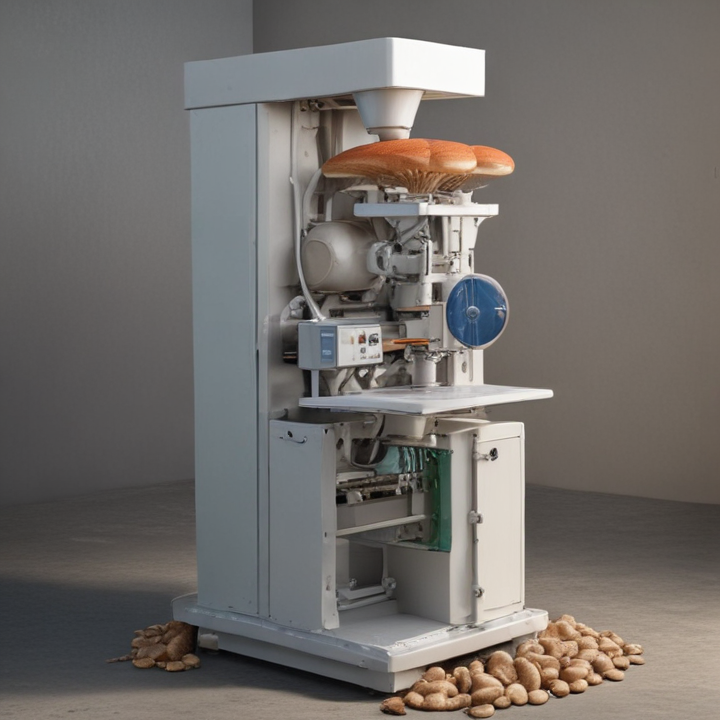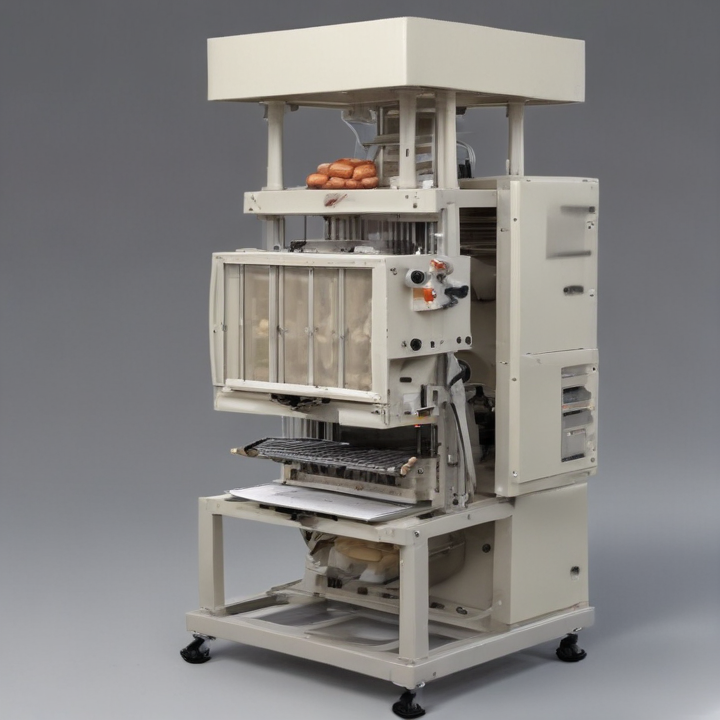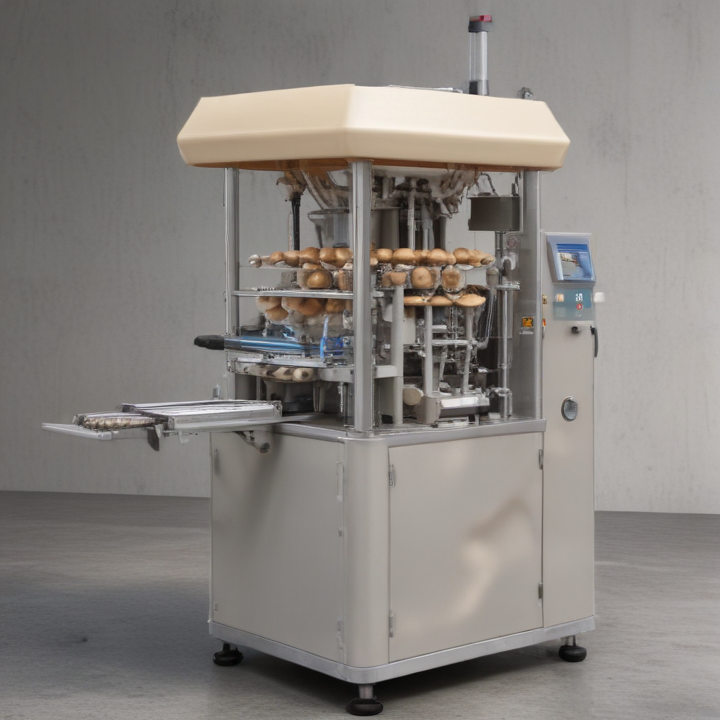List Technical Parameters of “mushroom packaging machine”
Mushroom packaging machines are sophisticated systems designed to package mushrooms efficiently, maintaining their freshness and quality. Below are the crucial technical parameters for such machines:
1. **Capacity**: Measured in packages per minute or hour, indicating the machine’s throughput. Standard machines range from 30 to 120 packages per minute.
2. **Packaging Type**: Determines whether the machine supports trays, punnets, bags, or flow packs. Customizable settings for various packaging formats are often available.
3. **Material Compatibility**: Compatibility with different packaging materials like plastic, cardboard, and biodegradable options.
4. **Dimension Specifications**: Maximum and minimum package dimensions (length, width, height) that the machine can handle. Typically ranges between 100mm to 300mm for length, 80mm to 250mm for width, and 30mm to 150mm for height.
5. **Weight Range**: The permissible weight of each package, generally between 100 grams to 2 kilograms.
6. **Sealing Technology**: Type of sealing employed (e.g., heat sealing, ultrasonic sealing). Heat sealing is common for plastic punnets, while ultrasonic is preferred for delicate biodegradable materials.
7. **Conveyor Speed**: Adjustability of the conveyor belt speed, often measured in meters per minute, which can range from 10 to 60 meters per minute.
8. **Power Consumption**: Electrical power requirements, typically between 1 kW to 5 kW, depending on the machine’s size and capabilities.
9. **Dimensions and Weight**: Overall dimensions and weight of the machine, necessary for space planning and transport. Common dimensions are approximately 2m (L) x 1.5m (W) x 2m (H), with weight around 500kg to over 1,000kg.
10. **Control System**: Type of control panel and user interface (e.g., touchscreen, PLC integration). Advanced machines have HMI (Human-Machine Interface) for easier operation.
11. **Sensors and Detectors**: Includes optical sensors, load cells, and metal detectors for ensuring safety and quality control.
12. **Maintenance Features**: Easy-clean design, modular components, and predictive maintenance capabilities to minimize downtime.
These parameters ensure that mushroom packaging machines can operate reliably, maintain product integrity, and meet various packaging requirements efficiently.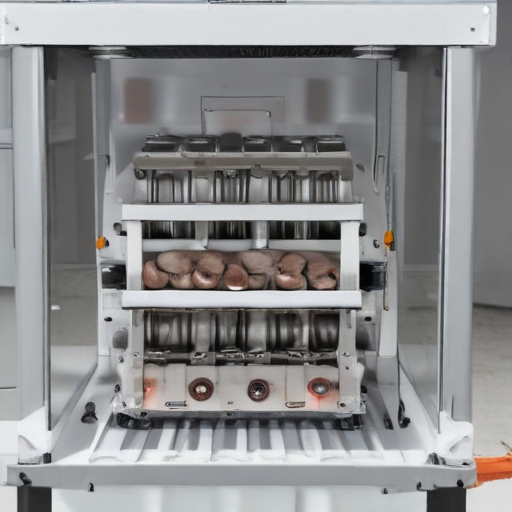
List Product features of “mushroom packaging machine”
1. **Automated Operation:**
– Advanced automation technology ensures consistent and precise packaging.
– Reduces the need for manual intervention, increasing efficiency and productivity.
2. **Versatile Packaging Options:**
– Supports various packaging styles, including clamshells, vacuum packs, and eco-friendly materials.
– Adjustable to accommodate different mushroom sizes and packaging quantities.
3. **High-Speed Performance:**
– Capable of processing large volumes rapidly to meet high-demand scenarios.
– Enhanced throughput without compromising on packaging quality.
4. **User-Friendly Interface:**
– Intuitive control panel with touchscreen display for easy operation.
– Multi-language support to cater to a global user base.
5. **Precision Weighing System:**
– Integrated weighing scales ensure accurate portion sizes.
– Minimizes product waste and ensures compliance with weight regulations.
6. **Durable Construction:**
– Made from robust, food-grade materials to ensure longevity and hygiene.
– Corrosion-resistant components designed for harsh operational environments.
7. **Hygienic Design:**
– Easy-to-clean surfaces and components to maintain strict sanitary conditions.
– Complies with food safety regulations and standards.
8. **Energy Efficiency:**
– Optimized power usage to reduce operational costs and environmental impact.
– Incorporates energy-saving modes and features.
9. **Compact Footprint:**
– Space-saving design suitable for facilities with limited space.
– Easy integration into existing production lines.
10. **Customizable Settings:**
– Programmable for different mushroom types and packaging requirements.
– Flexibility to adjust parameters to meet specific production goals.
11. **Safety Features:**
– Equipped with safety guards and emergency stop functions to protect operators.
– Meets industry safety standards for machinery operation.
12. **Remote Monitoring & Diagnostics:**
– Connectivity options for real-time monitoring and troubleshooting.
– Reduces downtime with predictive maintenance alerts.
List Application of “mushroom packaging machine”
Mushroom packaging machines are innovative tools designed to facilitate the production of biodegradable packaging made from mycelium, the root structure of mushrooms. These machines have multiple applications across various industries due to their sustainable and eco-friendly nature. Here are some key applications:
1. **Consumer Goods Packaging**: Companies can use mushroom packaging machines to create custom packaging for electronics, cosmetics, and household items. This form of packaging offers excellent protection and is biodegradable, appealing to eco-conscious consumers.
2. **Food and Beverage Industry**: Mushroom-based packaging can be used for creating containers and protective packaging for food products. Its insulating properties make it ideal for packaging items that require temperature control, such as fresh produce and refrigerated goods.
3. **E-commerce**: With the rise of online shopping, mushroom packaging provides a sustainable alternative to traditional plastic and polystyrene packaging materials. It can be used for protecting various shipped goods, ensuring safe delivery while minimizing environmental impact.
4. **Agriculture**: Mushroom packaging machines can help create biodegradable pots and trays for planting. These containers can be planted directly into the soil, reducing waste and promoting healthier growth conditions for plants.
5. **Pharmaceuticals**: The pharmaceutical industry can employ mushroom packaging to design eco-friendly packaging for medicines and medical devices. The material is non-toxic and provides adequate protection from physical damage and contamination.
6. **Furniture and Home Goods**: Designers and manufacturers are exploring mycelium-based materials for creating sustainable furniture pieces and home decor. The packaging machines can help in producing structural components as well as protective packaging.
7. **Automotive and Electronics**: Companies in these sectors are increasingly interested in sustainable packaging solutions for their parts and products. Mushroom packaging can provide the necessary cushioning and impact protection while being environmentally friendly.
Overall, mushroom packaging machines are revolutionizing the packaging industry by offering a sustainable alternative to traditional materials, aligning with the increasing demand for eco-friendly products across various sectors.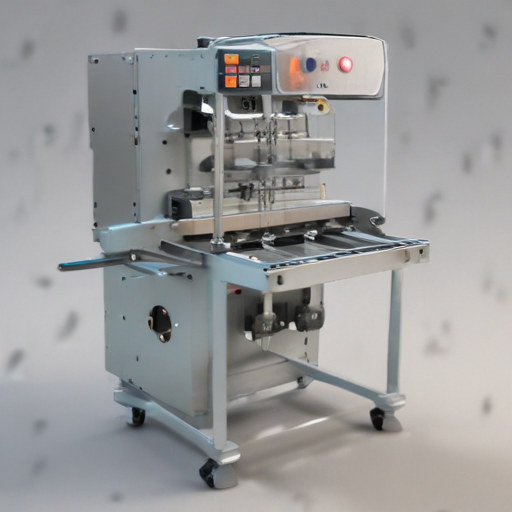
List Various Types of “mushroom packaging machine”
Certainly! Mushroom packaging, known for its eco-friendly characteristics, can be processed using various types of packaging machines. Here are several common types:
1. **Form-Fill-Seal Machines (FFS):**
– **Vertical FFS (VFFS):** Produces packaging bags from a roll of film and forms, fills, and seals the bags vertically. Ideal for mushroom compost bags.
– **Horizontal FFS (HFFS):** Similar process but horizontally. Used for packed mushroom substrates.
2. **Tray Sealing Machines:**
– Used to seal pre-formed trays containing mushroom packaging materials. Provides a sturdy and sealed package for transportation and storage.
3. **Thermoforming Packaging Machines:**
– Creates custom molds and forms the packaging from a plastic sheet, which is then filled and sealed. Suitable for compact mushroom packaging designs.
4. **Vacuum Packaging Machines:**
– Removes air from the package before sealing. Preserves the freshness of biodegradable mushroom packaging components.
5. **Blister Packaging Machines:**
– Forms a cavity or pocket from a formable web, usually by heat, which can be filled with mushroom packaging blocks and then sealed.
6. **Shrink Wrap Machines:**
– Encloses mushroom packaging in a shrink film, which is then shrunk tightly around the product using heat. Offers a tamper-evident packaging solution.
7. **Flow Wrap Machines:**
– Wraps the product in a continuous film, forming a tight seal. Useful for bulk mushroom packaging materials.
8. **Pouch Filling and Sealing Machines:**
– Specifically designed for pre-made pouches or bags. Offers flexibility for different sizes and types of mushroom packaging.
These machines cater to diverse packaging needs, ensuring that mushroom packaging products are effectively contained, protected, and presented.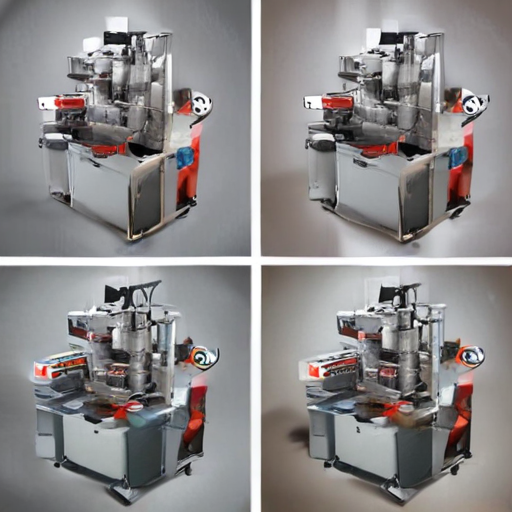
Custom Manufacturing Options for mushroom packaging machine
When seeking custom manufacturing options for a mushroom packaging machine, several considerations and features can be tailored to meet your specific needs:
1. **Capacity and Throughput**: Customize the machine to match your required packaging speed and volume. Whether you’re a small enterprise or a large-scale operation, capacity adjustments ensure efficiency.
2. **Packaging Size and Type**: Adapt the machine to accommodate various packaging sizes and materials. Options include biodegradable plastics, recycled papers, or custom-sized containers designed for specific mushroom types.
3. **Automated vs. Manual Operations**: Depending on labor availability and budget, you can choose between fully automated systems, semi-automated solutions, or manual options with adjustable features.
4. **Sealing Mechanism**: Integrate different sealing technologies like heat sealing, vacuum sealing, or eco-friendly adhesive options to preserve freshness and extend shelf life.
5. **Labeling and Printing**: Incorporate in-line labeling and printing for branding, expiration dates, and barcodes. Customizable label applicators can accommodate different label sizes and information layouts.
6. **Hygiene and Maintenance**: Ensure the design includes easy-to-clean components and complies with food safety standards. Features like stainless steel construction and accessible parts simplify cleaning and maintenance.
7. **Modularity and Scalability**: Design for scalability with modular components that allow for easy upgrades and expansions as your business grows.
8. **User Interface and Software**: Customize the user interface for ease of use, with options for touchscreen controls, multilingual capabilities, and integration with existing inventory and management systems.
9. **Environmental Controls**: Include climate control features to maintain optimal temperature and humidity levels, ensuring mushroom quality during packaging.
10. **Energy Efficiency**: Incorporate energy-saving technologies to reduce operational costs and environmental impact.
Collaborating with an experienced manufacturer who understands the nuances of mushroom packaging will ensure that your machine meets specific operational requirements, providing efficiency, quality, and sustainability.
List Quality Control and The Manufacturing Process of “mushroom packaging machine”
### Quality Control
1. **Material Inspection**: Raw materials such as metals, electronics, and plastics are inspected for compliance with specifications.
2. **Component Testing**: Key components like motors, sensors, and control units are tested individually for functionality and reliability.
3. **Assembly Line Inspection**: Step-by-step checks ensure that each assembly phase meets predefined quality standards.
4. **Performance Testing**: Each machine is tested to ensure it meets operational benchmarks such as speed, accuracy, and endurance.
5. **Calibration**: Machines are calibrated to ensure precision in packaging mushrooms, adjusting settings for optimal performance.
6. **Final Inspection**: A thorough final check includes inspecting the machine’s build quality, verifying functionalities, and running a complete operational test.
7. **Compliance Verification**: Conformance with industry standards and regulatory requirements is confirmed.
8. **Documentation Review**: All quality control activities are documented for traceability and future reference.
### Manufacturing Process
1. **Design and Development**:
– **Concept Development**: Initial design concepts are created based on market needs and technological feasibility.
– **Prototyping**: Prototypes are built and tested to refine the design.
2. **Material Sourcing**:
– **Supplier Selection**: Reliable suppliers are chosen for high-quality materials and components.
– **Procurement**: Materials and components are procured based on quality, cost, and lead time considerations.
3. **Manufacturing**:
– **Machining**: Metal parts are precisely machined to meet design specifications.
– **Fabrication**: Components are fabricated, including cutting, bending, and welding of metals.
– **Sub-Assembly**: Smaller components are assembled into sub-units such as control panels and feeding mechanisms.
4. **Assembly**:
– **Main Assembly**: Sub-assemblies are integrated into the main machine structure.
– **Wiring and Plumbing**: Electrical and hydraulic systems are installed.
– **Software Installation**: Control software is uploaded and configured.
5. **Testing**:
– **Functionality Testing**: Comprehensive tests are conducted to ensure all mechanical and electronic parts work correctly.
– **Test Runs**: The machine is run with actual or simulated mushroom packaging to identify any issues.
6. **Finishing**:
– **Painting and Coating**: Surfaces are painted or coated for durability and appearance.
– **Labeling and Branding**: The machine is labeled and branded according to company standards.
7. **Packaging and Shipping**: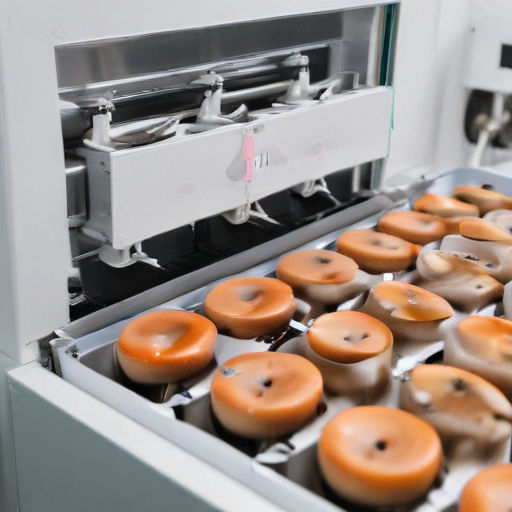
How to use “mushroom packaging machine”
Using a mushroom packaging machine involves several key steps to ensure efficiency and maintain product quality. Here’s a concise guide:
1. **Preparation**:
– **Inspect the Machine**: Ensure the machine is clean and in good working condition.
– **Load Materials**: Gather and load packaging materials (e.g., trays, films).
2. **Setup**:
– **Adjust Settings**: Set the appropriate parameters like temperature, speed, and film tension based on the mushroom type and packaging needs.
– **Calibration**: Calibrate the machine if it has weight-based operations to match the mushroom pack size.
3. **Loading Mushrooms**:
– **Manual or Automated Loading**: Depending on your machine, either load mushrooms manually onto the conveyor or ensure the automated loader is correctly aligned and operational.
4. **Packaging Process**:
– **Start the Machine**: Power on and begin the packaging process. Monitor for consistent operation.
– **Monitoring**: Observe the packing process for any blockages or issues. Adjust settings if necessary.
5. **Sealing and Labeling**:
– **Seal Packages**: Ensure proper sealing to maintain product freshness. This usually involves heat sealing or wrapping.
– **Labeling**: If your machine includes labeling, verify that labels are correctly applied with accurate information.
6. **Quality Checks**:
– **Inspect Packages**: Regularly check random samples for seal integrity, label accuracy, and overall package appearance.
– **Adjustments**: Make any necessary adjustments based on inspection results.
7. **Maintenance**:
– **Regular Cleaning**: After operation, clean the machine to prevent residue build-up and ensure hygiene.
– **Scheduled Servicing**: Regularly service the machine according to the manufacturer’s guidelines to ensure longevity and proper function.
By following these steps, you can effectively utilize a mushroom packaging machine to maintain product quality and operational efficiency.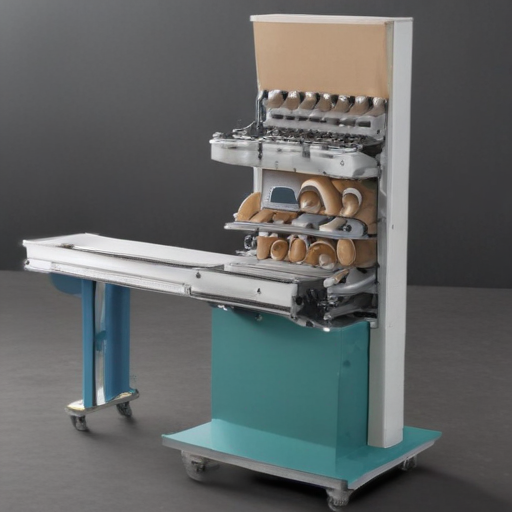
List Properties and Terms of “mushroom packaging machine”
**Mushroom Packaging Machine: Properties and Terms**
1. **Biodegradability**: The machine creates packaging materials from mycelium, the root structure of mushrooms, which is fully biodegradable and compostable.
2. **Sustainability**: Utilizes agricultural byproducts and mycelium, reducing the need for synthetic or non-renewable resources.
3. **Customization**: Offers flexibility in creating various shapes and sizes to suit different packaging requirements.
4. **Energy Efficiency**: Designed to operate with low energy consumption compared to traditional manufacturing processes.
5. **Production Speed**: Capable of producing packaging materials relatively quickly once the mycelium growth process is optimized.
6. **Strength and Durability**: Produces packaging that is strong yet lightweight, providing good protection for goods during transit.
7. **Thermal Insulation**: The material offers natural thermal insulation, beneficial for temperature-sensitive products.
8. **Shock Absorption**: Excellent shock-absorbing properties, making it ideal for fragile items.
9. **Cost-Effectiveness**: Lower material costs due to the use of agricultural waste products and lower energy requirements.
10. **Moldability**: Mycelium can be grown into complex shapes, allowing for diverse design possibilities without needing extensive molds or dies.
**Terms:**
– **Mycelium**: The thread-like network of fungal cells used in mushroom packaging.
– **Compostable**: Capable of breaking down into natural elements in a compost environment, leaving no toxic residue.
– **Agricultural Byproducts**: Leftover agricultural materials used as the substrate for growing mycelium.
– **Substrate**: The base material on which mycelium grows, often composed of organic waste.
– **Growth Chamber**: A controlled environment where mycelium is grown and formed into packaging.
– **Incubation Time**: The period required for mycelium to grow and consolidate into its final form.
– **Harvesting**: The process of removing the grown mycelium material from molds for further processing.
– **Hydration Levels**: The amount of water content necessary for optimal mycelium growth.
– **Sterilization**: The act of destroying unwanted microbes to ensure healthy mycelium growth.
– **Curing**: The final process of drying and solidifying the mycelium into a durable packaging material.
Mushroom packaging machines present an environmentally-friendly alternative to conventional packaging, aligning with increasing global sustainability efforts.
List The Evolution history of “mushroom packaging machine”
The evolution of mushroom packaging machines is tightly intertwined with technological advancements in agriculture and packaging industries. Here’s a brief history:
**1. Early Manual Methods (Pre-20th Century):**
Before industrialization, mushrooms were harvested and packed manually. Growers used baskets or crates, providing minimal protection from physical damage, contamination, and spoiling.
**2. Basic Mechanical Aids (Early 20th Century):**
With the advent of industrialization, basic mechanical devices, such as simple conveyors and hand-operated tools, began to aid the packaging process. These methods still required significant manual labor.
**3. Semi-Automated Systems (Mid-20th Century):**
Post World War II, packaging technology saw considerable advancements. Semi-automated mushroom packaging systems with basic conveyor belts, scales, and mechanical sorting devices reduced labor intensity and increased throughput.
**4. Automated Packaging Lines (Late 20th Century):**
The latter part of the 20th century witnessed a shift to fully automated systems. These included advanced conveyors, bagging, and weighing machines integrated with microprocessors for better precision and efficiency. Modified Atmosphere Packaging (MAP) started gaining traction, prolonging shelf life by altering the atmospheric composition around the product.
**5. Integrated Smart Technology (Early 21st Century):**
The early 2000s brought about the integration of smart technologies. These machines incorporated sensors, IoT (Internet of Things) devices, and automation software, enabling real-time monitoring and adjustments. Robotics began handling delicate tasks, further reducing human intervention.
**6. Sustainable Packaging Innovations (2010s to Present):**
As sustainability became a global focus, mushroom packaging machines advanced to handle eco-friendly materials. Techniques to reduce waste and energy consumption were integrated. Smart packaging technologies, such as QR codes for traceability and anti-microbial solutions for extended freshness, became standard features.
This concise evolution highlights significant advances from manual methods to sophisticated, sustainable systems, reflecting broader trends in technology and sustainability.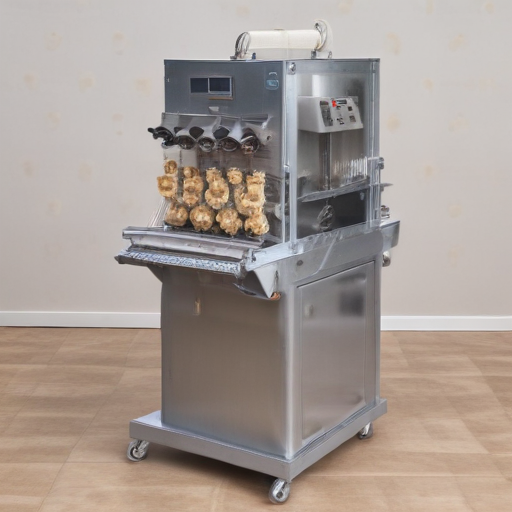
How to Select a Reliable mushroom packaging machine
Selecting a reliable mushroom packaging machine involves several key considerations to ensure efficiency, durability, and cost-effectiveness. Here are the essential factors:
1. **Machine Type**:
– **Automatic vs. Semi-Automatic**: Determine your production needs. Automatic machines offer higher throughput with less manual intervention, suitable for large-scale operations. Semi-automatic may be better for smaller enterprises with a lower budget.
2. **Capacity and Speed**:
– Evaluate the machine’s packaging speed and capacity to match your production volume. Check the machine’s throughput (packages per minute) against your daily requirements.
3. **Compatibility with Packaging Materials**:
– Ensure the machine can handle the types of packaging materials you use, such as plastic punnets, trays, or biodegradable options. Compatibility reduces downtime and material wastage.
4. **Durability and Build Quality**:
– Look for robust construction using high-quality materials like stainless steel, which is resistant to corrosion, especially crucial in humid environments typically found in mushroom packaging.
5. **Ease of Operation and Maintenance**:
– Choose a user-friendly machine with intuitive controls. Easy access for cleaning and maintenance can greatly reduce downtime and extend the machine’s lifespan.
6. **Customization and Flexibility**:
– Consider if the machine can be adapted for different packaging sizes and formats, as market demands may change.
7. **Energy Efficiency**:
– Energy-efficient machines can reduce operating costs and align with sustainability goals.
8. **Manufacturer Reputation and Support**:
– Research manufacturers with a solid track record in the mushroom packaging industry. Reliable after-sales support, availability of spare parts, and warranties are critical considerations.
9. **Cost**:
– Balance initial cost with long-term benefits. Factor in the machine’s total cost of ownership, including maintenance, energy consumption, and expected lifespan.
10. **Regulatory Compliance**:
– Verify that the machine complies with local and international safety and hygiene standards relevant to food packaging.
By carefully evaluating these factors, you can select a mushroom packaging machine that enhances productivity, maintains product quality, and delivers long-term value.
List “mushroom packaging machine” FAQ
### Mushroom Packaging Machine FAQ
**1. What is a mushroom packaging machine?**
A mushroom packaging machine automates the packaging process for mushrooms, optimizing for speed, consistency, and hygiene. It often involves processes such as weighing, filling, sealing, and labeling.
**2. How does a mushroom packaging machine work?**
Typically, mushrooms are fed into the machine where they are weighed and portioned. Next, they are placed into packaging material, which is sealed and labeled with necessary information.
**3. What types of packaging can be used?**
Common packaging includes plastic trays, clam-shells, bags, and sustainable biodegradable options. The choice depends on requirements like shelf-life, presentation, and environmental considerations.
**4. Is the machine easy to operate?**
Most modern mushroom packaging machines come with user-friendly interfaces featuring touch screens, automatic calibration, and self-diagnostics to simplify operations.
**5. What are the benefits of using a mushroom packaging machine?**
Key benefits include increased efficiency, reduced labor costs, improved product presentation, extended shelf life, and enhanced hygiene standards.
**6. Can the machine handle different sizes and types of mushrooms?**
Yes, many machines are adjustable to accommodate various sizes and species, from small button mushrooms to larger portobellos.
**7. How do I maintain the machine?**
Routine maintenance includes regular cleaning, checking for wear and tear on parts like belts and seals, and following manufacturer guidelines for servicing to ensure longevity.
**8. What capacity can the machine handle?**
Capacity varies but generally, machines can handle thousands of packages per hour, depending on the model and settings.
**9. Is there any training required?**
Some basic training is generally provided by the manufacturer to ensure operatives are familiar with the machine’s operation, maintenance, and troubleshooting.
**10. Are there customizable options available?**
Yes, many manufacturers offer customization to meet specific needs such as different packaging forms, additional labeling, and integration with other automated systems.
**11. How costly is it?**
Costs vary widely based on the machine’s capacity, features, and customization. It’s advisable to get quotes from different suppliers to find one that fits your budget and requirements.
This concise FAQ aims to provide essential information about mushroom packaging machines, offering a basic understanding for anyone interested in the technology.
Top 10 FAQ with answer about mushroom packaging machine for Buyer Sourcing from China
Sure, here are the top 10 frequently asked questions (FAQ) about sourcing mushroom packaging machines from China:
1. **What types of mushroom packaging machines are available?**
China offers a variety of machines including vacuum packaging machines, modified atmosphere packaging (MAP) machines, and tray sealing machines tailored specifically for mushrooms.
2. **What’s the lead time for delivery?**
Delivery times vary by manufacturer, usually between 30-60 days. Always confirm lead times during the negotiation phase.
3. **Can the machines handle different mushroom varieties?**
Yes, most machines are designed to handle different types including button, oyster, shiitake, and more by adjusting settings or using customizable packaging trays.
4. **What certifications should I look for?**
Look for CE certification to ensure the machine meets European safety standards. ISO certification is also a mark of quality manufacturing.
5. **What’s the typical price range?**
Prices vary depending on the machine’s capacity and features, ranging from $5,000 to $50,000. Always request multiple quotes for comparison.
6. **Is after-sales service available?**
Many reputable manufacturers offer after-sales service, including installation assistance, operation training, and maintenance. Confirm this before purchase.
7. **What is the warranty period?**
Warranties typically range from 1 to 3 years. Ensure to have clear terms in the purchase agreement.
8. **How can I ensure the machine suits my needs?**
Request a product demo, either virtual or at the manufacturer’s facility. Also, check reviews and testimonials from other buyers.
9. **Are spare parts readily available?**
Verify that the manufacturer provides readily available spare parts and has a system in place for quick shipping to avoid operational downtime.
10. **What is the minimum order quantity (MOQ)?**
Most manufacturers do not have an MOQ for machinery but always inquire just in case, especially if you might need customized solutions.
By addressing these FAQs, buyers can make a more informed decision when sourcing mushroom packaging machines from China.

